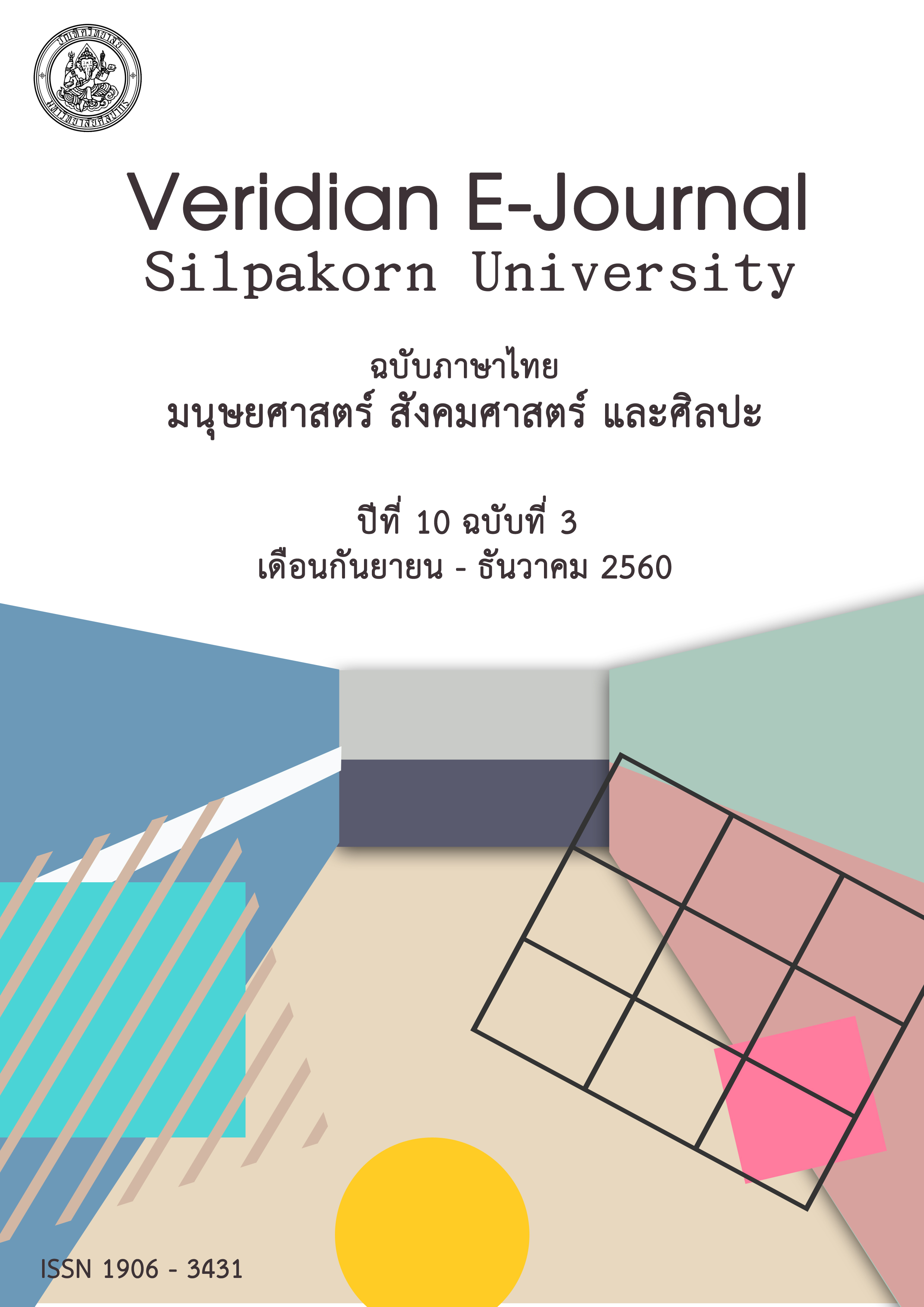จิตรกรรมร่วมสมัย: บทบาทและสถานภาพของเพศหญิงในวัฒนธรรมไทย – จีน
Main Article Content
Abstract
รากเหง้าวัฒนธรรมจีนสืบทอดจารีตจากแนวคำสอนของขงจื้อในระบบปิตาธิปไตย (Patriarchal kinship) ที่ควบคุม กำกับ สถานภาพและบทบาทของสตรีจีนในครอบครัวและสังคมที่สะท้อนกรอบบรรทัดฐานที่ครอบงำ และกดดันต่อเพศหญิงในสังคมจีน บทความวิจัยนี้มุ่งที่จะอธิบายกระบวนการในการเชื่อมต่อและถ่ายทอดความรู้สึก ความทรงจำ และประสบการณ์ของจีนโพ้นทะเลและลูกหลานจีนในสังคมไทยผ่านการถ่ายทอดด้วยภาพแทนบุคคลในรูปลักษณ์ตุ๊กตาเพศหญิงกระเบื้องเคลือบ ที่สะท้อนอัตลักษณ์ทางวัฒนธรรมจีนผ่านศิลปวัตถุ ผสานกับการเขียนมังกรด้วยเทคนิคลวดลายครามในศิลปะเก่าแก่ของจีนที่แสดงถึงสัญลักษณ์เพศชาย ร่วมกับลวดลายที่ได้ถูกสร้างสรรค์ขึ้นใหม่ภายใต้จินตนาการของผู้วิจัย
ผู้วิจัยบูรณาการประสบการณ์ที่เป็นจีนแต้จิ๋วของตนเอง เข้ากับการศึกษาวิจัยเอกสาร รวมทั้งจากงานนวนิยาย ละคร และการวิจัยด้วยวิธีชาติพันธุ์วรรณา (Ethnographic research) โดยใช้การสัมภาษณ์เชิงลึกจากกลุ่มสตรีจีนแต้จิ๋ว 3 ช่วงอายุ ประกอบด้วย จีนโพ้นทะเล (Oversea Chinese) อายุมากกว่า 70 ปี ไทย – จีน ชาวไทยเชื้อสายจีน (Chino-Thai) อายุ 70-50 ปี และ ลูกหลานจีน (Descendant) อายุต่ำกว่า 50 ปี โดยให้กลุ่มตัวอย่างเล่าถึงประสบการณ์ที่ได้รับการเลี้ยงดูและเติบโตขึ้นภายในระบบครอบครัวปิตาธิปไตยของวัฒนธรรมจีน และวัฒนธรรมไทย – จีน ผู้วิจัยใช้แนวคิดของศิลปะสตรีนิยม ผสานกับการวิเคราะห์สัญญะการแทนค่าทางศิลปะ ร่วมกับการตีความใหม่โดยสร้างจินตภาพจากเรื่องเล่าสู่แรงบันดาลใจจนพัฒนาเป็นงานศิลปะสร้างสรรค์จิตรกรรมร่วมสมัย โดยสร้างกระบวนการ ขั้นตอน ในการสร้างสรรค์การแปลความหมายจากแรงบันดาลใจไปสู่การหาคำตอบในเชิงงานวิจัย การถอดรหัสความหมายทางวัฒนธรรมชั้นต้น ไปสู่กระบวนการคัดสรร การสร้างพื้นที่ว่างที่ประกอบขึ้นระหว่างจิตรกรรมแบบตะวันตกที่มีมิติแบบเหมือนจริง (Realistic) ไปสู่การผสานรวมของพื้นที่ว่างแบบตะวันออก
The Chinese tradition is mainly rooted in patriarchal kinship, which regulates the role and status of Chinese women within familial and social aspects of their culture. The goal of this paper is to explain the process of connecting and transferring the feelings, memories, and experiences of Chinese migrant women in Chino-Thai culture through portraiture painting with the form of a Chinese doll. The Chinese traditional motifs’ symbols were investigated and classified according to the meaning of each Chinese art element which can represent male and female symbols. This creative research presents the Chinese porcelain doll with a recreated traditional motif crafted through the researcher’s imagination. It narrates the meaning of the repression of women under the male-dominated culture.
The researcher integrates her own Teochew (Chinese ethnicity) experiences in this culture (self-narrative), and includes Chino-Thai literature (novels, soap operas) as well as ethnographic research methodology, which includes interviews of Teochew women from three generations: first generation Chinese migrants (over age 70), Chino-Thais (age 70-50), and Thais (under age 50). They were asked to narrate their own aspects and experiences about their upbringing and growing up under Chinese patriarchal culture. The researcher uses the semiotic analysis and interpretation of the interview data to inform the creative language of a series paintings that conveys the feelings, memories, and experiences of Teochew women.

